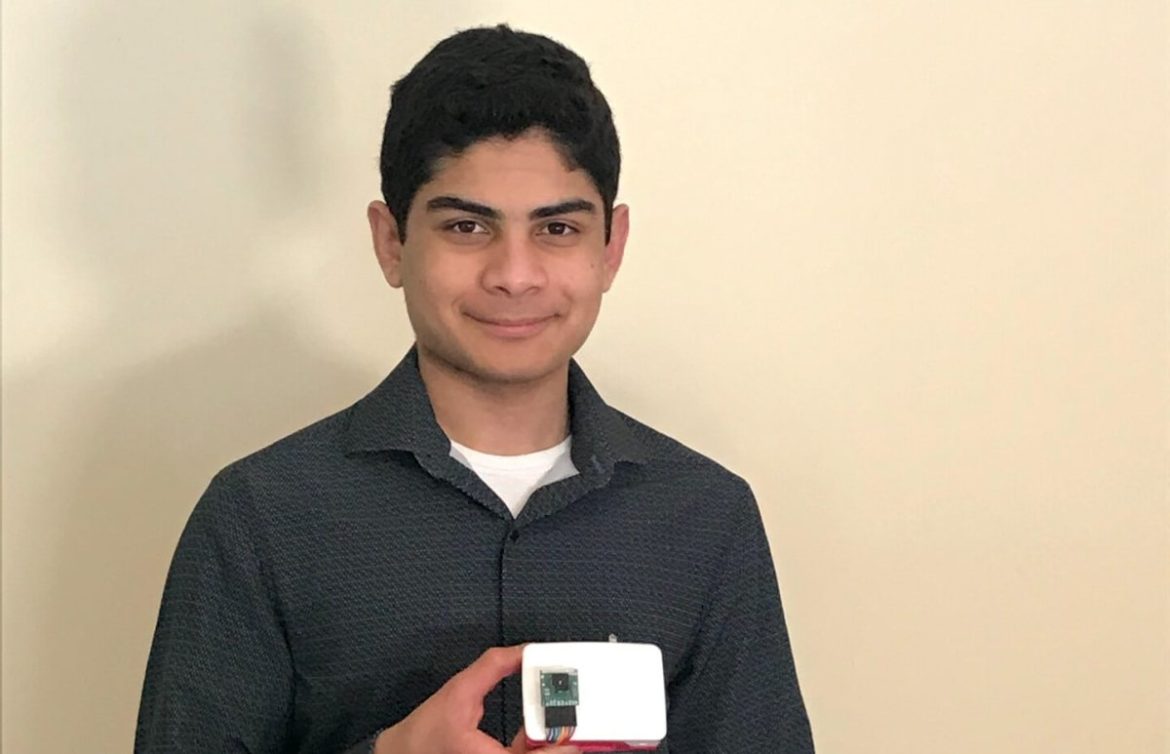Vetri Vel may only be 16, but the quick-thinking and methodical Bangor High School senior is already using the STEM disciplines to design a device with real-world implications.
Vel, who lives in Veazie, came in sixth place at this year’s Regeneron Science Talent Search competition last month, beating out more than 1,750 other entries nationwide after engineering an infrared monitoring system that automatically detects when someone has fallen and texts for help. He won $80,000 to pay for his college education and $2,000 for Bangor High’s STEM program over the course of the competition. STEM stands for science, technology, engineering and math.
The science competition has run for decades and is often considered the most prestigious of its kind in the United States. Past finalists have included Nobel Prize winners, tech CEOs and politicians.
Vel first got the idea after hearing that his grandmother, who lives in India, had fallen. While Vel’s grandfather noticed what had happened quickly and drove her to the hospital, Vel wondered what would have happened had he not been there. Then, he heard about a neighbor who had fallen and broken her hip and wasn’t found until the next day.
Further research into the issue only increased his interest in a solution: Falls are the leading cause of injury and death for Americans 65 and older, according to the U.S. Centers for Disease Control and Prevention. Many of those people can go up to an hour without receiving help, Vel said, with delayed assistance increasing the chance of hospitalization and death.
Vel started working on the project around the summer of 2019. The wall-mounted device uses a thermal camera and neural network technology to determine the appearance of someone who has fallen and immediately texts for help.
While the device is similar to medical alert technology such as Life Alert, its primary difference is that it can notify someone of an emergency even if the individual is rendered unconscious by the fall. The money he won in the competition will be a big help as he goes on to college. Yet, Vel said, being able to meet other seniors from across the country during the virtual competition was just as valuable.
“They’re all really interested in using science to improve the quality of life across the world,” Vel said.
He hopes to eventually test his system on real older subjects in a nursing home. While the COVID-19 pandemic has prevented him from doing that so far, he is hoping that will change once he is vaccinated and restrictions are lifted.
Vel said he became interested in STEM subjects at a young age, an interest he said his parents fostered. He started immersing himself in learning about physics in middle school before shifting his focus to engineering in high school, skipping from sixth to eighth grade in the process.
Signs that Vel would accomplish great things came early, said Cary James, former head of STEM at Bangor High School. Vel was already doing advanced-level physics problems during his freshman year, James said.
He said Vel’s success lies in his intelligence but also his work ethic and passion for science.
“He doesn’t just do it for the sake of competing in a competition,” James said. “He does it because he likes to understand things at their most absolutely fundamental level.”
James noted that Vel was not the first Bangor High student to go far in the Regeneron competition, which was previously called the Intel Science Talent Search competition. Paige Brown won first place in 2016 after designing a gadget to improve water quality. Brown went on to study at Stanford University and is now the CEO of WindBorne Systems, which collects atmospheric data using high-tech weather balloons.
Vel has been accepted into the Massachusetts Institute of Technology and Stanford University for the upcoming semester. While he has yet to decide where he wants to go in the fall, he is leaning toward MIT, where he could study electrical engineering and applied physics.
He hopes that he can inspire other young people to become interested in science. He recommends focusing on what they like and running with it. For him, it was math and physics. “Of course, learn what’s in the textbooks and what other people have already done,” Vel said. “But always be asking why and how stuff works.”

